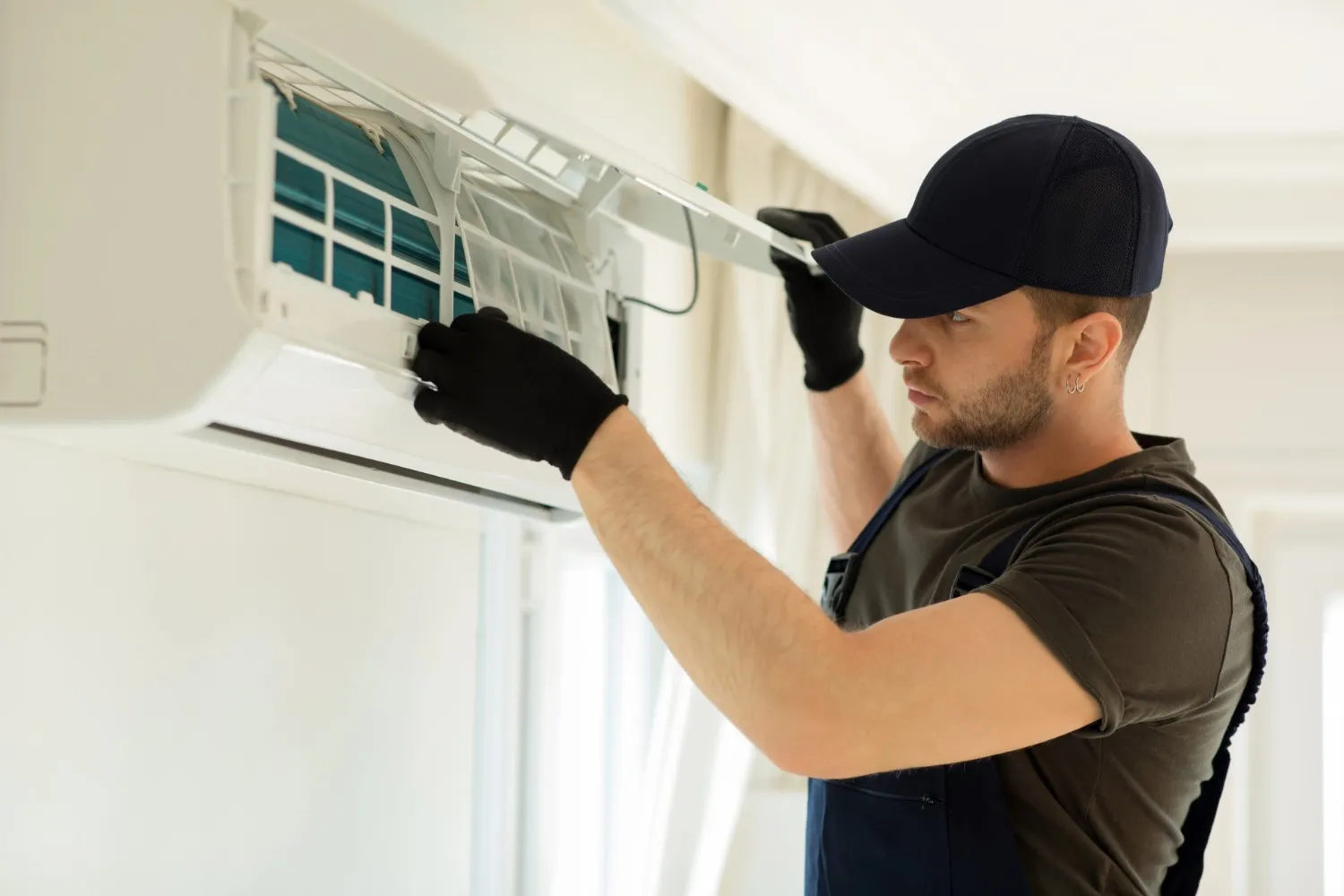Mini-Split Replacement Services in Prairieville
Mini-split replacement in Prairieville. Learn signs you need upgrade, benefits of new system, and replacement process. Restore comfort, efficiency. Learn more.
Mini-split systems have become a popular choice for targeted heating and cooling solutions, offering flexibility and efficiency for homes and businesses in Prairieville. Unlike traditional ducted systems, mini-splits, also known as ductless systems, allow for independent temperature control in specific zones or rooms. However, like all HVAC equipment, mini-split systems have a finite lifespan. When your ductless system begins to show signs of age or malfunction, a professional mini-split replacement may be the most practical and cost-effective solution.
Understanding when and why to replace your mini-split is the first step towards restoring optimal comfort and efficiency in your space. An aging or failing mini-split can lead to inconsistent temperatures, higher energy bills, and frequent, costly repairs. Addressing these issues with a timely replacement can save you money in the long run and provide enhanced performance.
Signs You May Need Mini-Split Replacement
Recognizing the indicators of a declining mini-split system is crucial for making an informed decision about replacement. While minor repairs might address isolated issues, a pattern of problems often points towards the need for a full system upgrade. Look out for the following signs:
- Age of the System: Most mini-split systems are designed to last between 10 to 15 years, although this can vary depending on usage, maintenance, and installation quality. If your system is approaching or has exceeded this age range, its components may be wearing out, leading to decreased efficiency and increased breakdowns. An older system might also lack the advanced features and energy efficiency of newer models.
- Frequent or Expensive Repairs: If you find yourself calling for repairs more often, or if individual repair costs are becoming substantial, it's a strong signal that your system is nearing the end of its service life. Continuously repairing an old unit can cost more over time than investing in a new, reliable system.
- Decreased Performance: Is your mini-split struggling to maintain the desired temperature in your zone? Are some areas cooler or warmer than others? A noticeable drop in heating or cooling capacity suggests internal components are failing.
- Rising Energy Bills: Older mini-split systems often have lower Seasonal Energy Efficiency Ratio (SEER) ratings compared to modern units. As components age, efficiency further degrades. If your energy bills have been steadily increasing without a change in usage, your mini-split might be consuming more power than it should to provide comfort. New systems with higher SEER ratings are significantly more energy-efficient, potentially leading to considerable savings on utility costs.
- Unusual Noises or Odors: While mini-splits are known for quiet operation, grinding, rattling, buzzing, or persistent unusual odors (like mold or burning) can indicate serious internal problems. These issues often point to mechanical failures or microbial growth that may not be fully resolved with simple cleaning or repair.
- Outdated Technology: Newer mini-split systems come equipped with advanced features like inverter technology for precise temperature control, smart thermostat compatibility, enhanced air filtration, and quieter operation. Replacing an old system allows you to benefit from these technological advancements, improving comfort and convenience.
If you're experiencing any of these issues with your mini-split system in Prairieville, consulting with an HVAC professional is recommended to assess the situation and determine if replacement is the best course of action.

Benefits of Upgrading Your Mini-Split System
Investing in a new mini-split system offers several significant advantages that contribute to improved home comfort and reduced operating costs:
- Enhanced Energy Efficiency: Modern mini-split systems boast higher SEER ratings, meaning they can provide the same amount of cooling (or heating) using less energy. This translates directly into lower monthly energy bills, potentially saving you a significant amount over the system's lifespan.
- Improved Comfort and Consistent Temperatures: New systems utilize advanced technology like variable-speed compressors (inverter technology) that can precisely adjust output to match the heating or cooling demand. This results in more stable temperatures without the wide swings often experienced with older, single-speed units. Zoning capabilities inherent to mini-splits also allow for personalized comfort in different areas of your home.
- Quieter Operation: Manufacturers have made significant advancements in reducing the noise levels of both the indoor and outdoor components of mini-split systems. Newer models operate much more quietly, contributing to a more peaceful indoor environment.
- Increased Reliability: A brand-new system comes with fresh components and manufacturer warranties, drastically reducing the likelihood of unexpected breakdowns compared to an aging unit. This provides peace of mind, especially during extreme weather.
- Better Indoor Air Quality: Many modern mini-split systems include improved air filtration capabilities, capturing more dust, pollen, and other airborne contaminants, contributing to healthier indoor air.
- Potential Rebates and Incentives: Replacing an old, inefficient system with a new, high-efficiency model may qualify you for local utility rebates, manufacturer incentives, or even federal tax credits, helping to offset the initial cost of the replacement.
Considering these benefits, replacing an outdated mini-split is often a smart long-term investment for property owners in Prairieville.
The Mini-Split Replacement Process
Replacing a mini-split system involves several steps, best handled by experienced HVAC professionals to ensure proper installation and optimal performance. The typical process includes:
- Assessment: A technician will evaluate your existing system, assess the condition of your space, and discuss your specific heating and cooling needs, including the size and number of zones required.
- System Recommendation: Based on the assessment, the technician will recommend suitable replacement mini-split systems, considering factors like square footage, insulation, climate, energy efficiency goals (SEER rating), and budget. They will explain the features and benefits of different options.
- Removal of Old System: The old indoor and outdoor units, along with refrigerant lines and electrical connections, are safely disconnected and removed. Proper handling and disposal of refrigerants are critical for environmental safety.
- Installation of New System: The new indoor air handler(s) and outdoor condenser unit are installed. This involves mounting the units, running new refrigerant lines (or verifying the suitability of existing lines), connecting electrical wiring, and installing the condensate drain.
- Testing and Calibration: Once installed, the system is tested thoroughly to ensure all components are functioning correctly, refrigerant levels are accurate, and the system is delivering the expected heating or cooling output in each zone. The technician will calibrate controls and explain how to operate your new system.
- Cleanup: The installation area is cleaned, and all old equipment and debris are removed.
Professional mini-split replacement ensures that your new system is correctly sized, installed according to manufacturer specifications and local codes, and operating at peak efficiency and performance from day one.
Choosing the Right Replacement System
Selecting the appropriate mini-split replacement involves more than just picking a brand. Key factors to consider include:
- System Size (Capacity): Measured in BTUs (British Thermal Units), the capacity must match the square footage and specific needs of the zone(s) being conditioned. An undersized system won't adequately cool or heat, while an oversized system can cycle on and off too frequently, reducing efficiency and humidity control.
- Number of Zones: Determine if you need a single-zone system for one specific area or a multi-zone system to control temperatures independently in several rooms using one outdoor unit.
- Energy Efficiency (SEER, HSPF): Look for high SEER (Seasonal Energy Efficiency Ratio) for cooling and HSPF (Heating Seasonal Performance Factor) for heating to maximize energy savings. Higher ratings mean lower operating costs.
- Features: Consider features like inverter technology, variable fan speeds, quiet mode, advanced filtration, remote control options, smart thermostat compatibility, and Wi-Fi connectivity.
- Brand Reputation and Warranty: Choose a reputable manufacturer known for quality and reliability. Review the warranty coverage for parts and the compressor.
- Professional Recommendation: Rely on the expertise of your HVAC professional to guide you through these choices based on their assessment of your specific needs and the local climate in Prairieville.
While mini-split systems are different from traditional central AC replacement or heating systems, the principles of proper sizing, efficient operation, and professional installation are universal to ensuring effective climate control.
Replacing your mini-split system is a significant upgrade that can dramatically improve comfort, efficiency, and the overall value of your property in Prairieville. When your existing system is no longer meeting your needs, exploring replacement options is a worthwhile step towards enjoying reliable, customized heating and cooling.
Customer
Testimonials
Go With Experience



